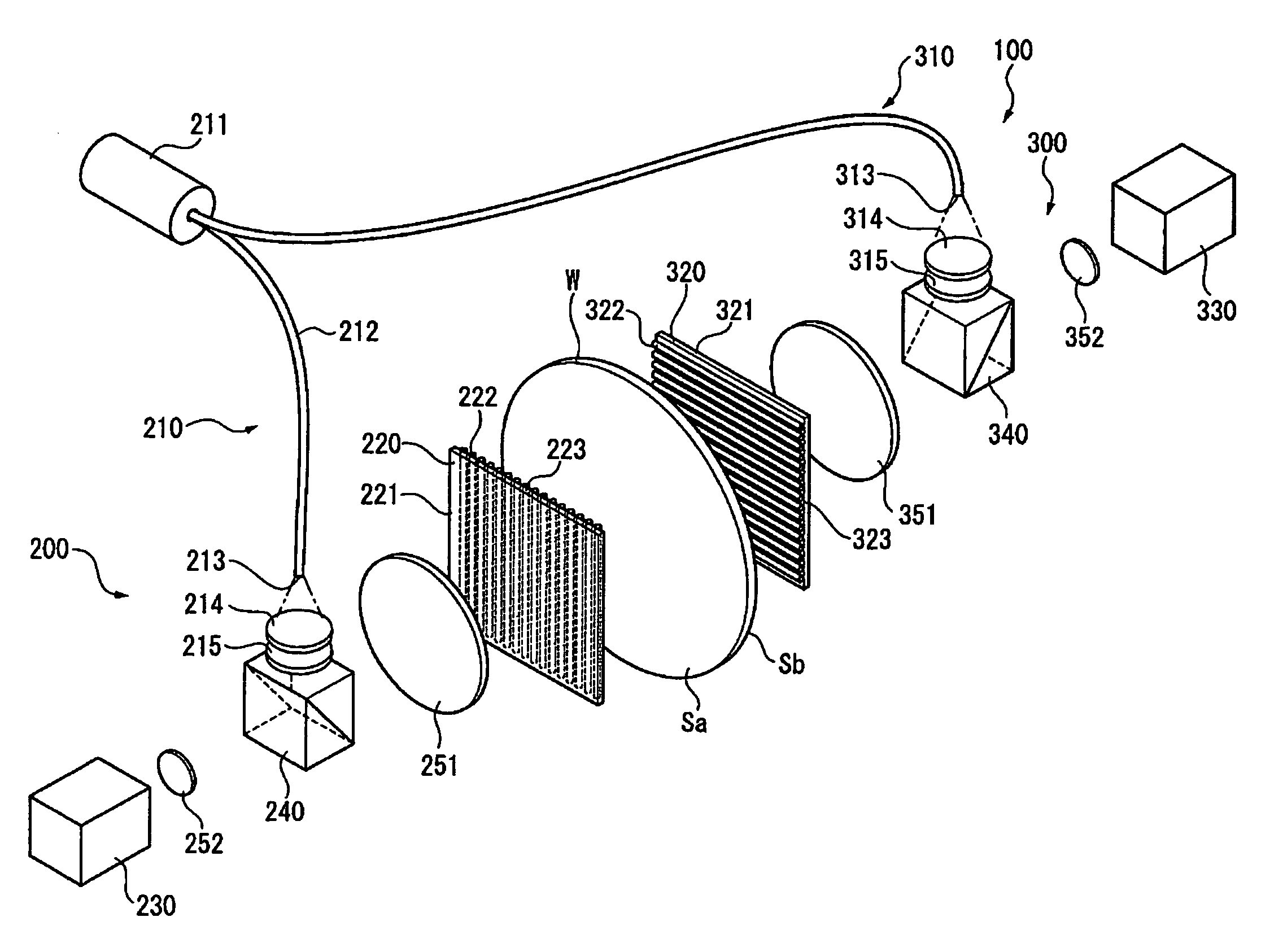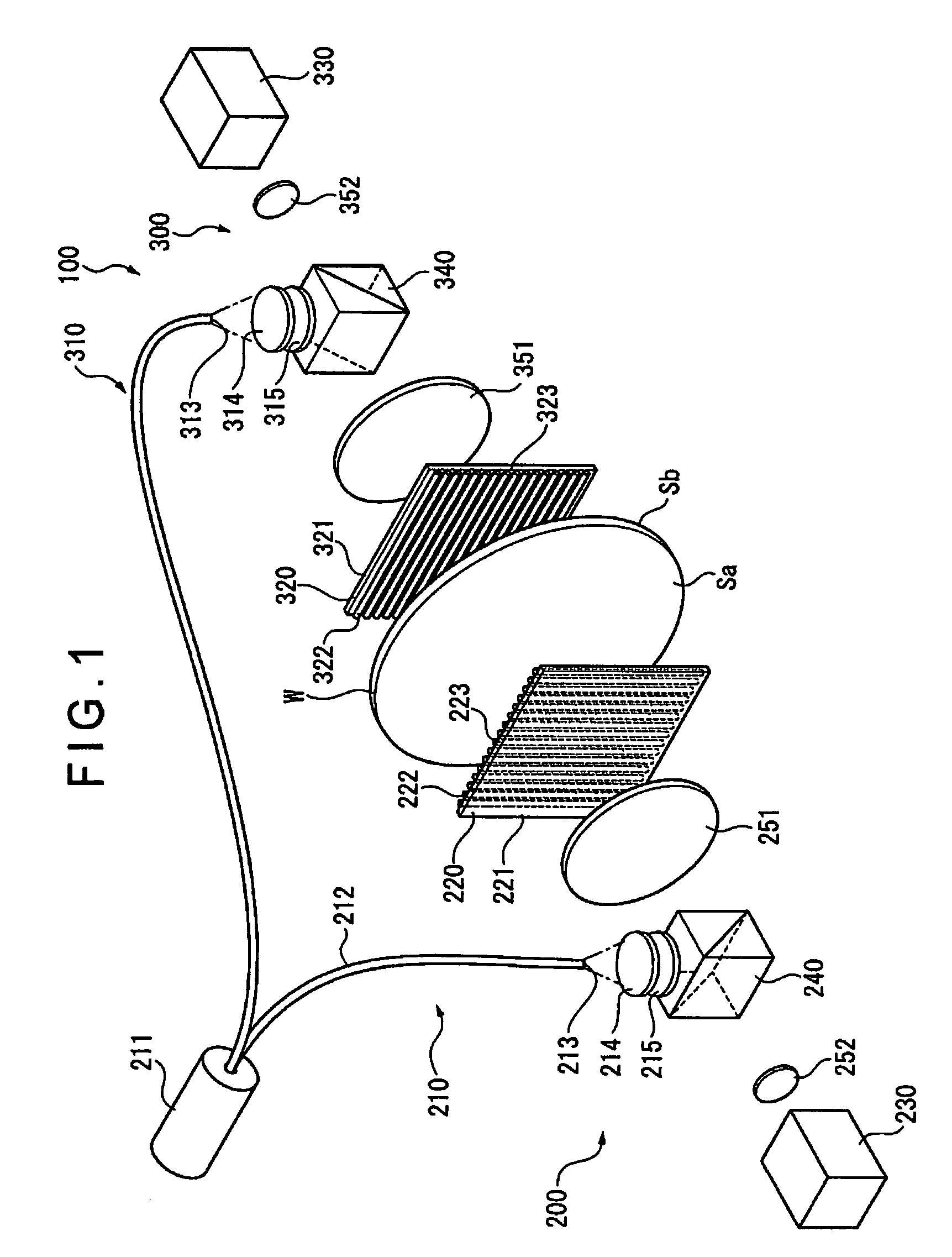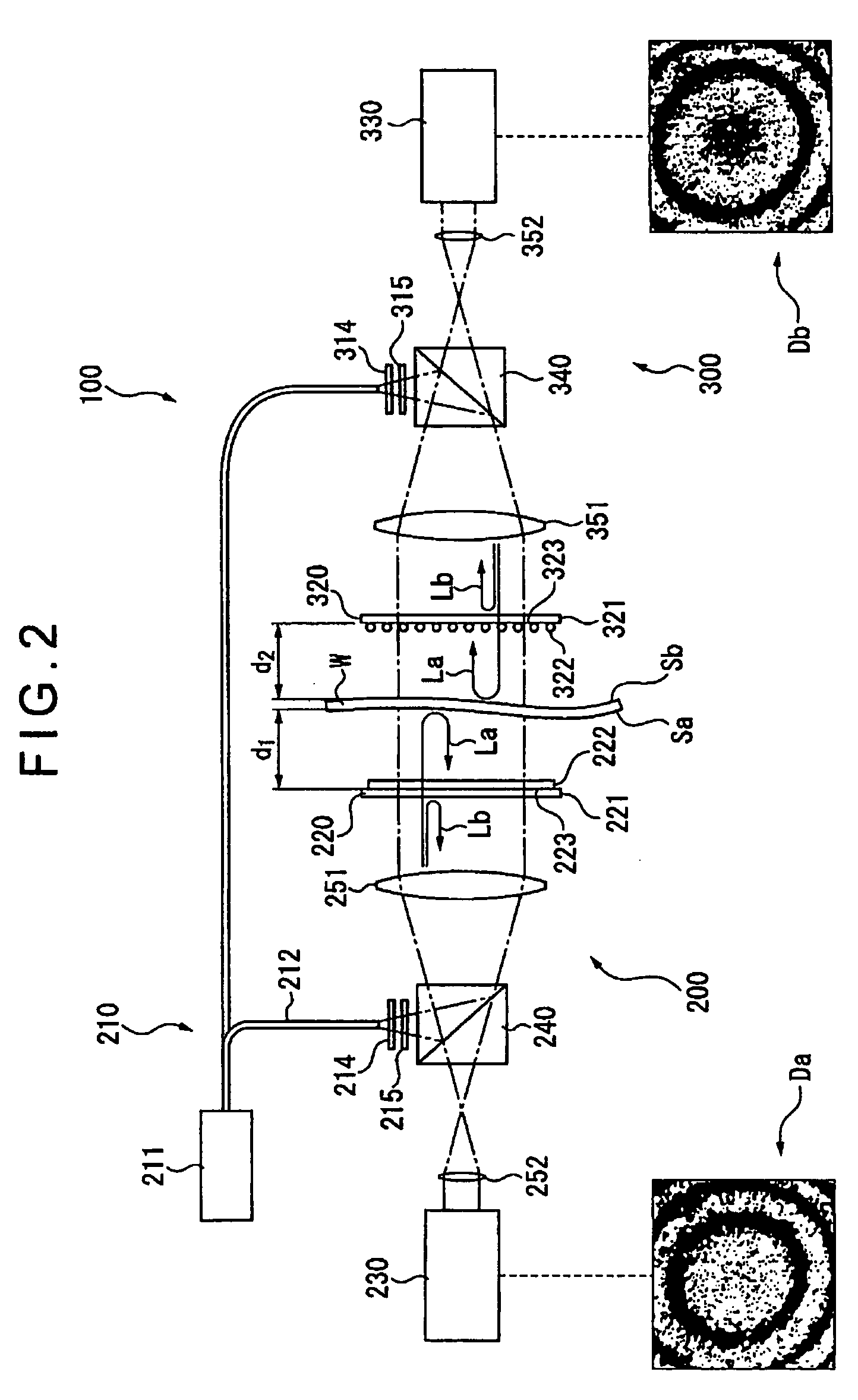Optical Interferometer
an interferometer and optical technology, applied in the field of optical interferometers, to achieve the effect of accurate matching with each other
- Summary
- Abstract
- Description
- Claims
- Application Information
AI Technical Summary
Benefits of technology
Problems solved by technology
Method used
Image
Examples
first modification
[0114]In the first embodiment, the interference fringe sensor is provided with the polarizer for causing interference between the P wave and the S wave and the CCD camera for capturing the interference fringe. However, the interference fringe sensor may be a phase shift interference fringe sensor that simultaneously acquires phase interference fringes different from each other may be provided.
[0115]As the phase shift interference fringe sensor, an arrangement shown in FIG. 4 can be exemplified.
[0116]In FIG. 4, a phase shift interference fringe sensor 400 includes a quarter wavelength plate 410, a complex polarizer 420 and a complex CCD camera 430 as a capturing section.
[0117]The quarter-wavelength plate 410 changes the reference light of the S wave that is incident on the phase shift interference fringe sensor into circular polarized light. The quarter wavelength plate 410 also changes the object light of the P wave that is incident on the phase shift interference fringe sensor into...
second modification
[0124]As the phase shift interference fringe sensor, an arrangement shown in FIG. 6 may be alternatively employed.
[0125]In FIG. 6, a phase shift interference fringe sensor 500 includes a quarter wavelength plate 510, an imaging lens 520, a no-interference light beam dividing prism 530, a first, second and third polarized plate 541, 542 and 543 and a first, second and third CCD camera 551, 552 and 553.
[0126]The no-interference light beam dividing prism 530 includes a first triangle prism 531, a second triangle prism 532 and a trapezoid prism 533 which are adhered to each other. The no-interference light beam dividing prism 530 divides no-interference light into three light beams.
[0127]Surfaces on which the prisms 531 to 533 are adhered to each other are semi-transmissive.
[0128]The first to third polarized plates 541 to 543 are inserted in optical paths of light beams emitted from the no-interference light beam dividing prism 530. Transmission axis angles of the first to third polariz...
third modification
[0131]As the phase shift interference fringe sensor, an arrangement shown in FIG. 7 may be alternatively employed
[0132]In FIG. 7, a phase shift interference fringe sensor 600 includes a quarter wavelength plate 610, half mirrors 621, 622 each dividing a light beam into three, a reflection mirror 623, polarizers 631 to 633 disposed in optical paths and CCD cameras 641 to 643.
[0133]The reference light Lb and the object light La having polarization directions orthogonal to each other are transmitted through the quarter wavelength plate 610 as a no-interference light beam. The no-interference light beam is transmitted through the quarter wavelength plate 610, so that the object light La and the reference light Lb in the no-interference light beam which have vibration directions orthogonal to each other becomes circular polarized light having rotation directions opposite to each other.
[0134]The light transmitted through the quarter wavelength plate 610 is divided into three light beams b...
PUM
 Login to View More
Login to View More Abstract
Description
Claims
Application Information
 Login to View More
Login to View More - R&D
- Intellectual Property
- Life Sciences
- Materials
- Tech Scout
- Unparalleled Data Quality
- Higher Quality Content
- 60% Fewer Hallucinations
Browse by: Latest US Patents, China's latest patents, Technical Efficacy Thesaurus, Application Domain, Technology Topic, Popular Technical Reports.
© 2025 PatSnap. All rights reserved.Legal|Privacy policy|Modern Slavery Act Transparency Statement|Sitemap|About US| Contact US: help@patsnap.com



